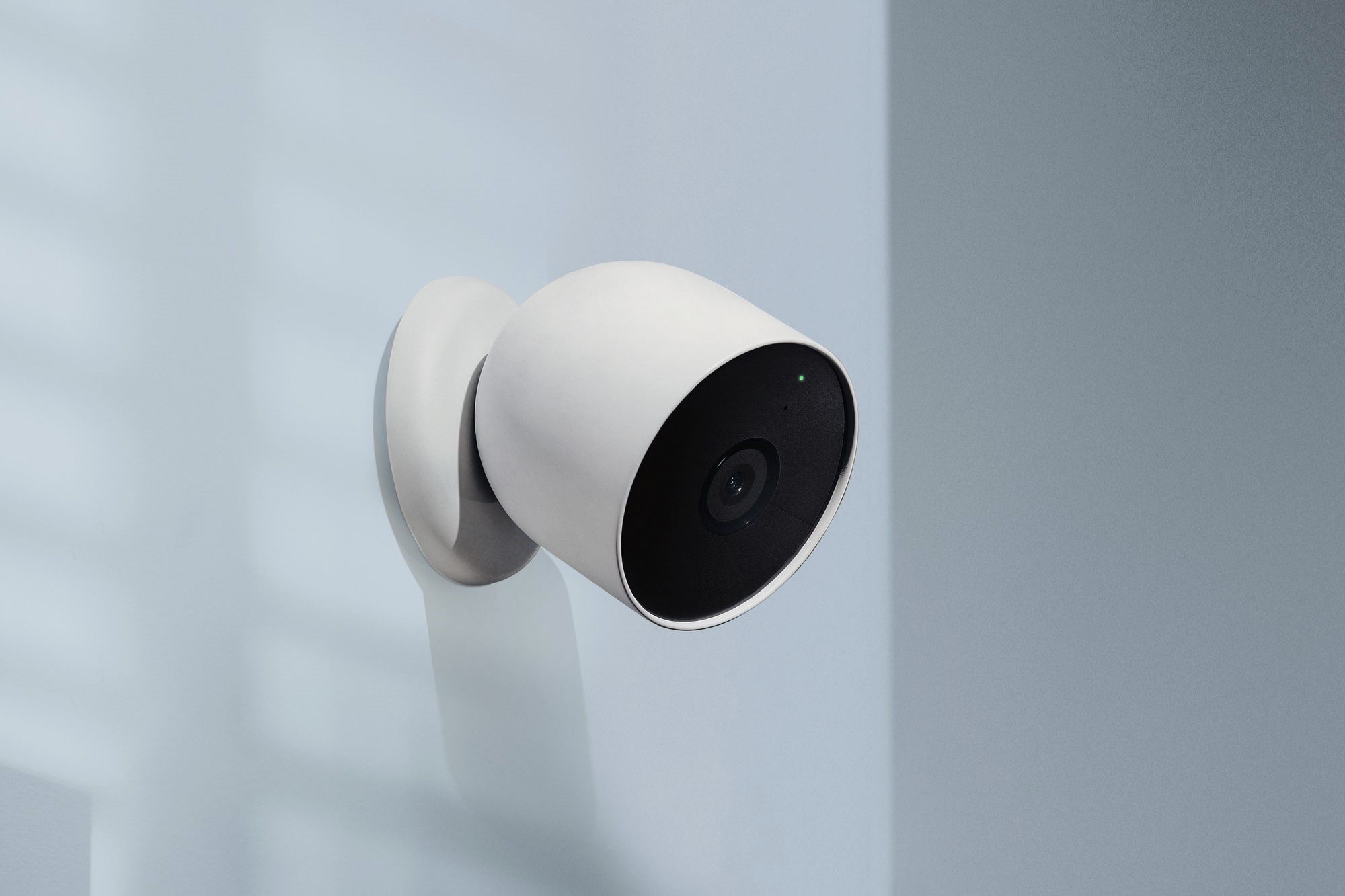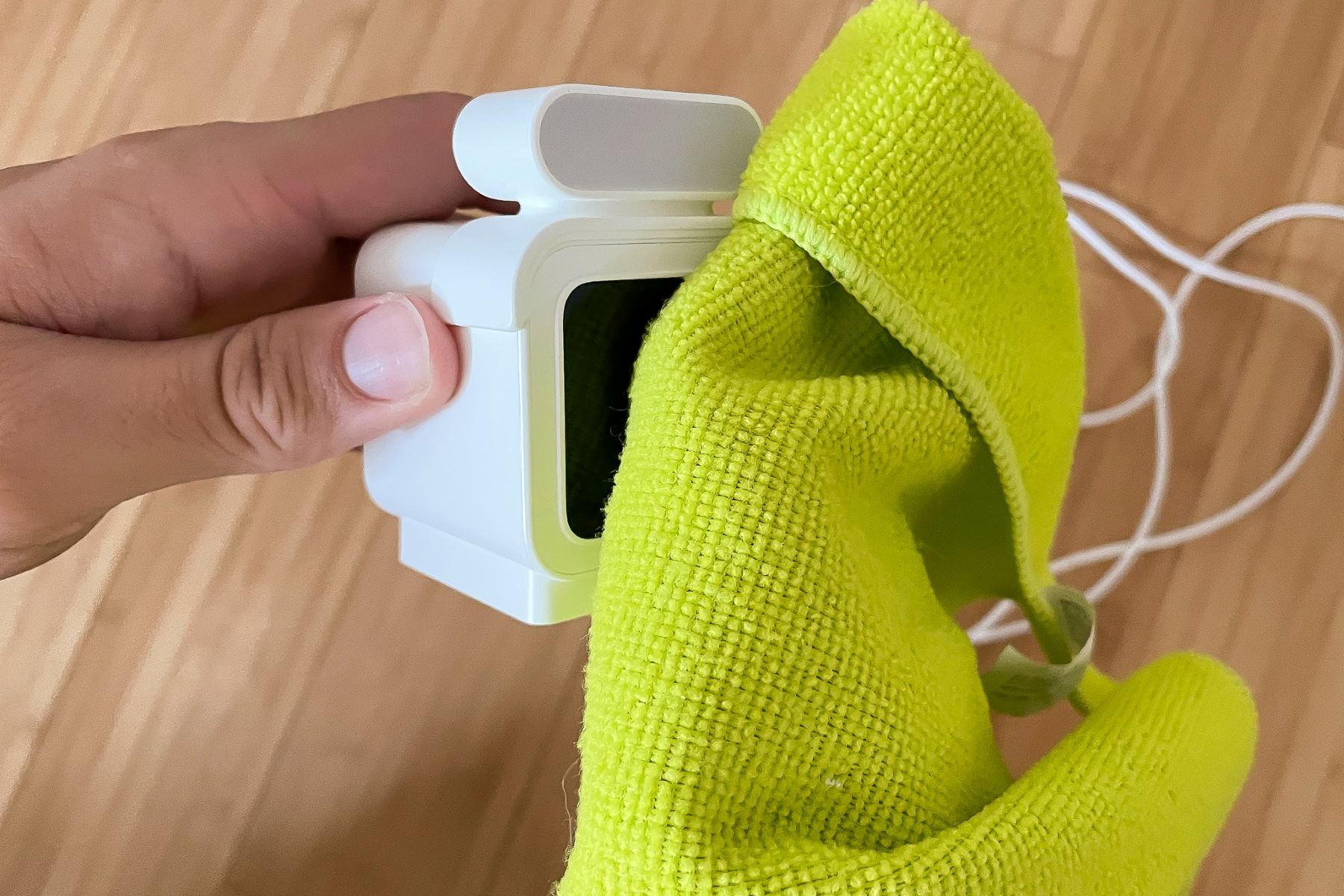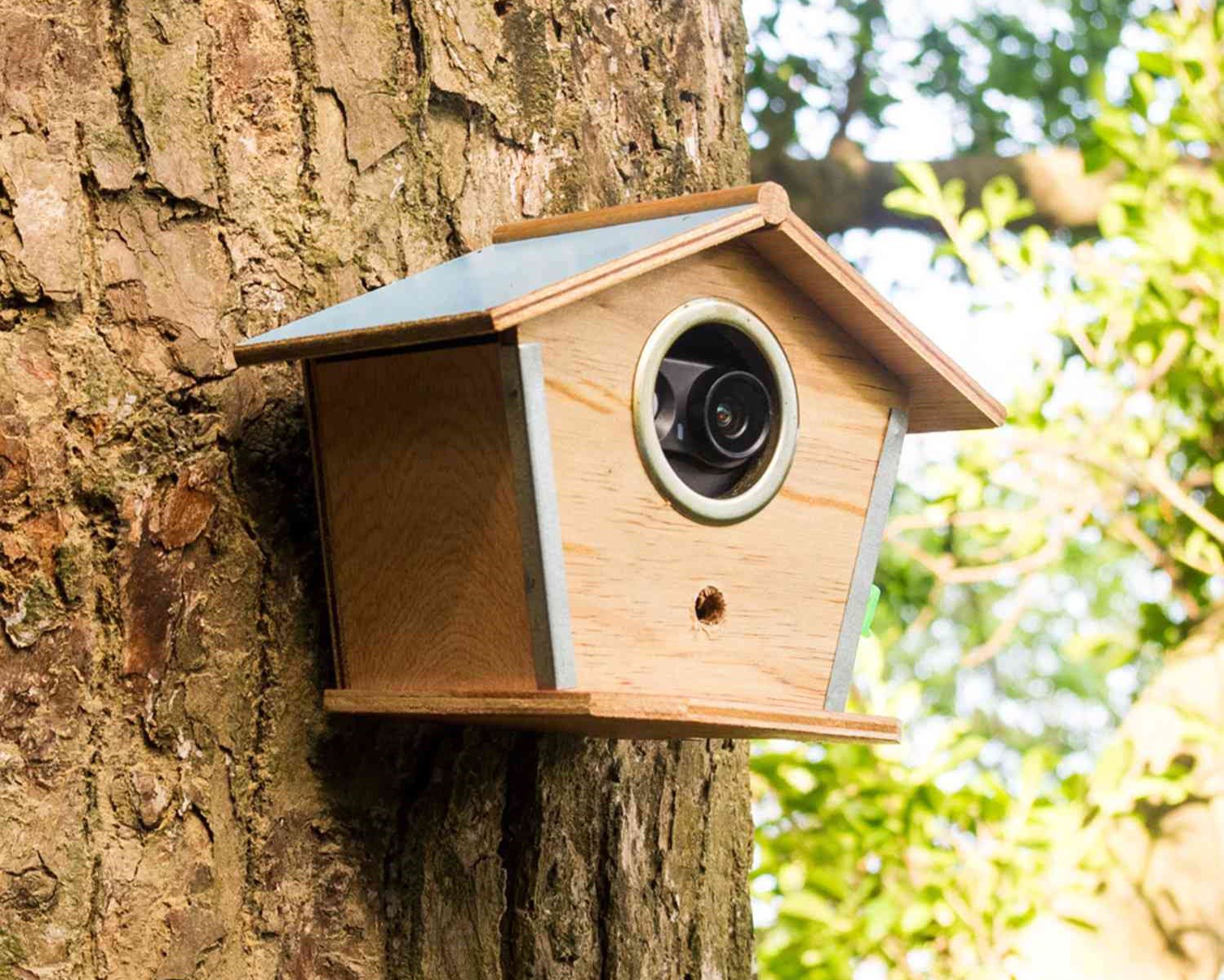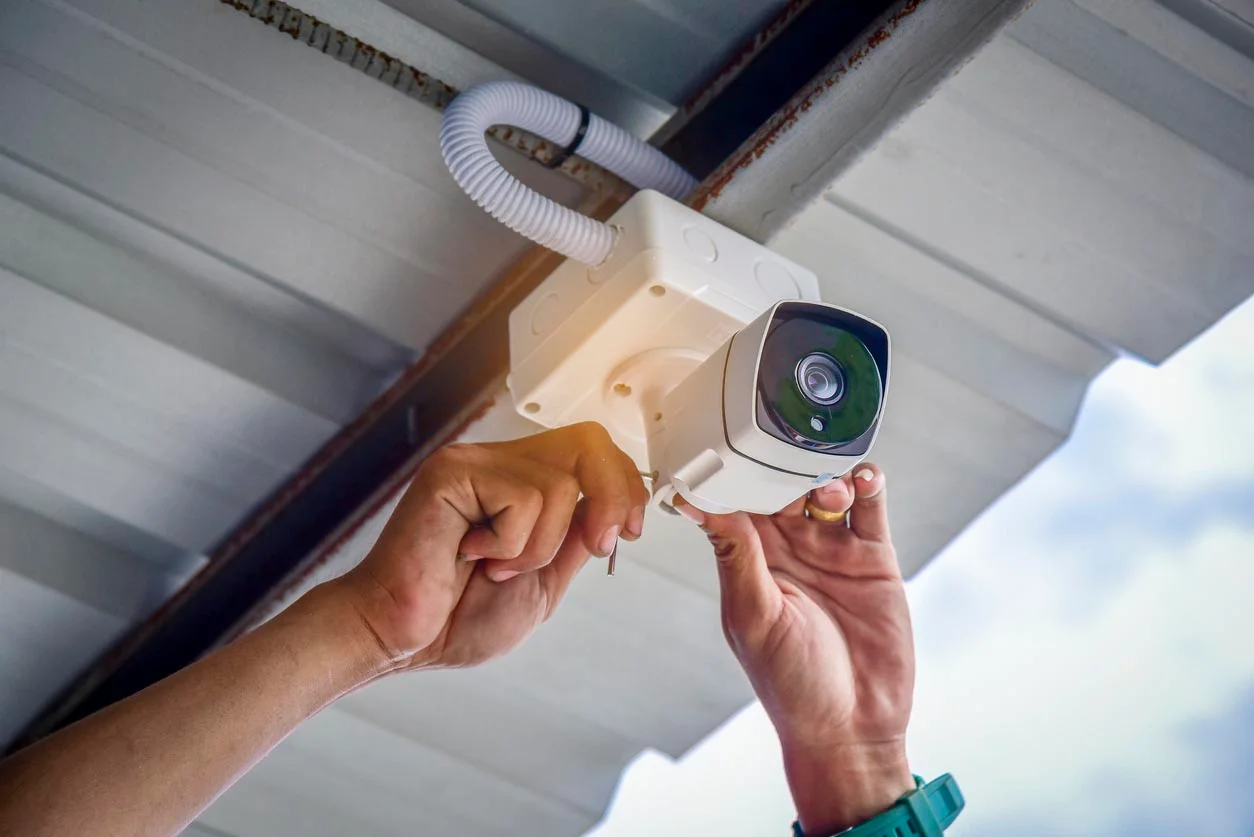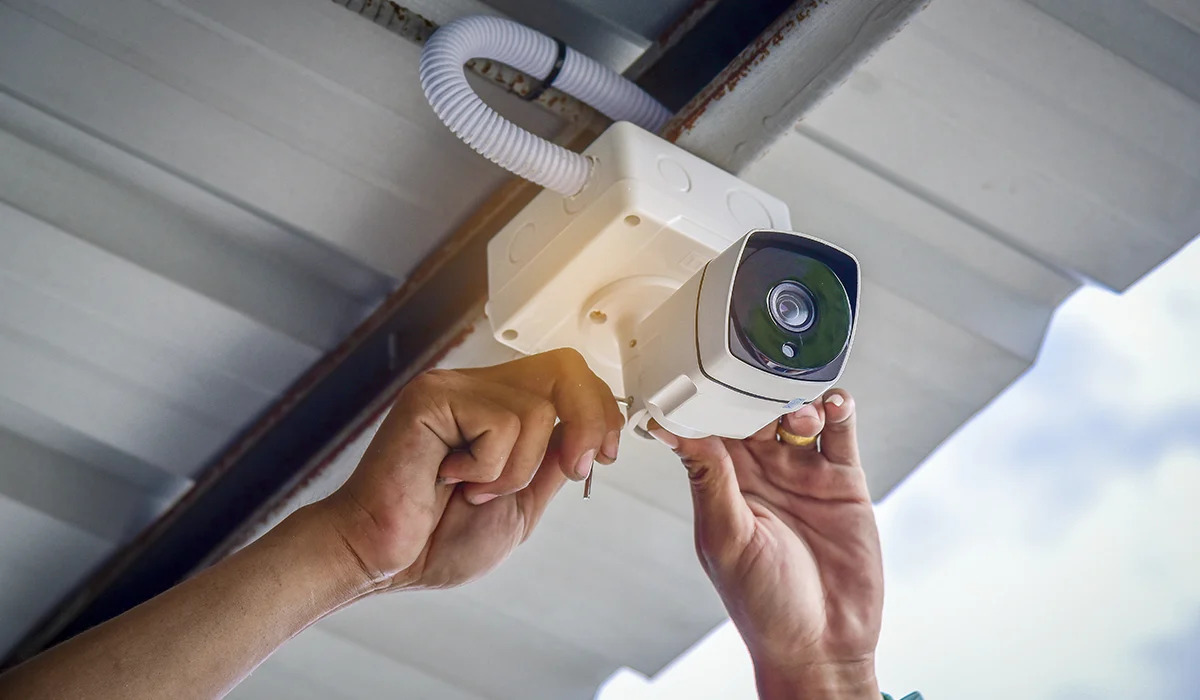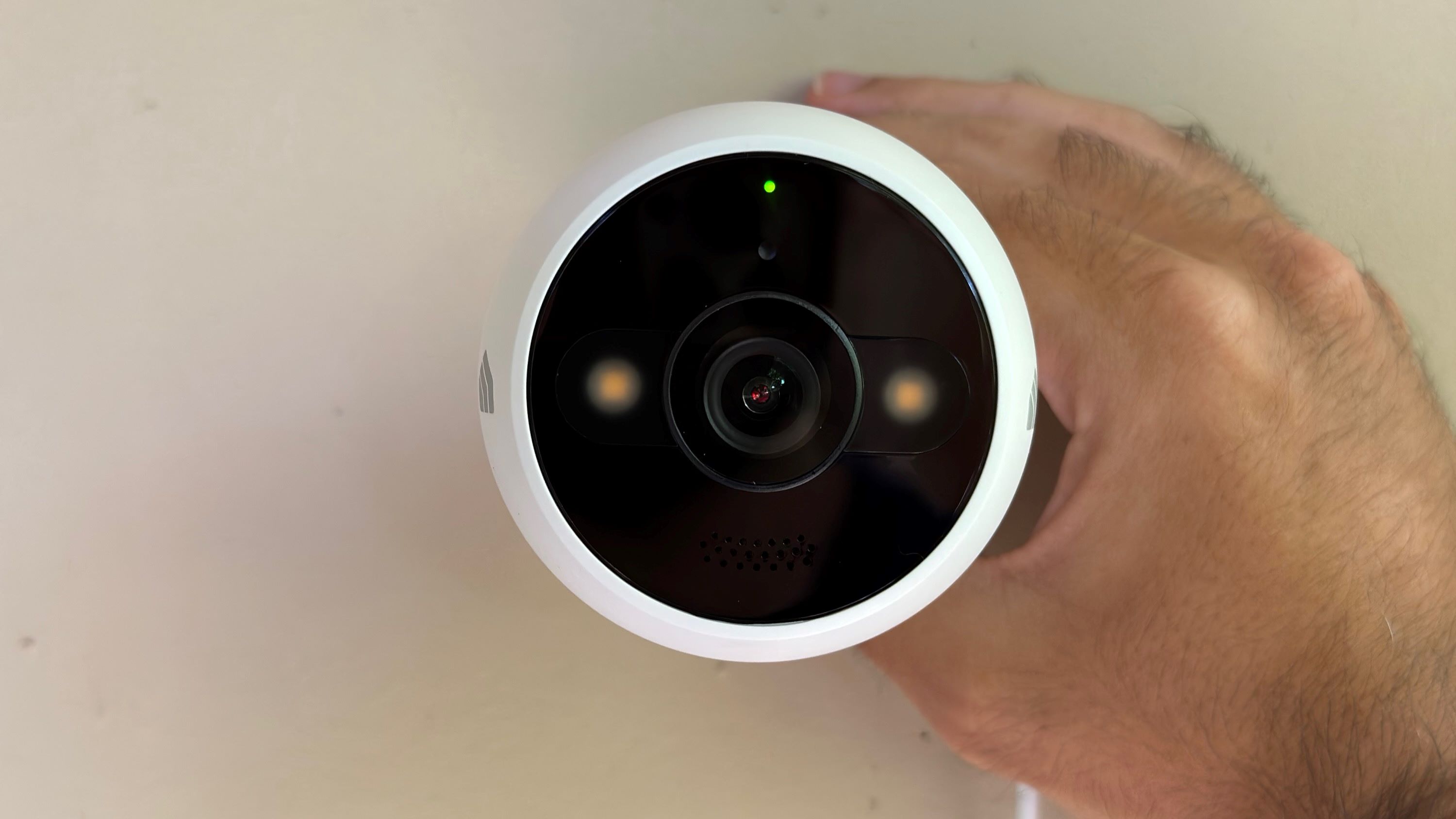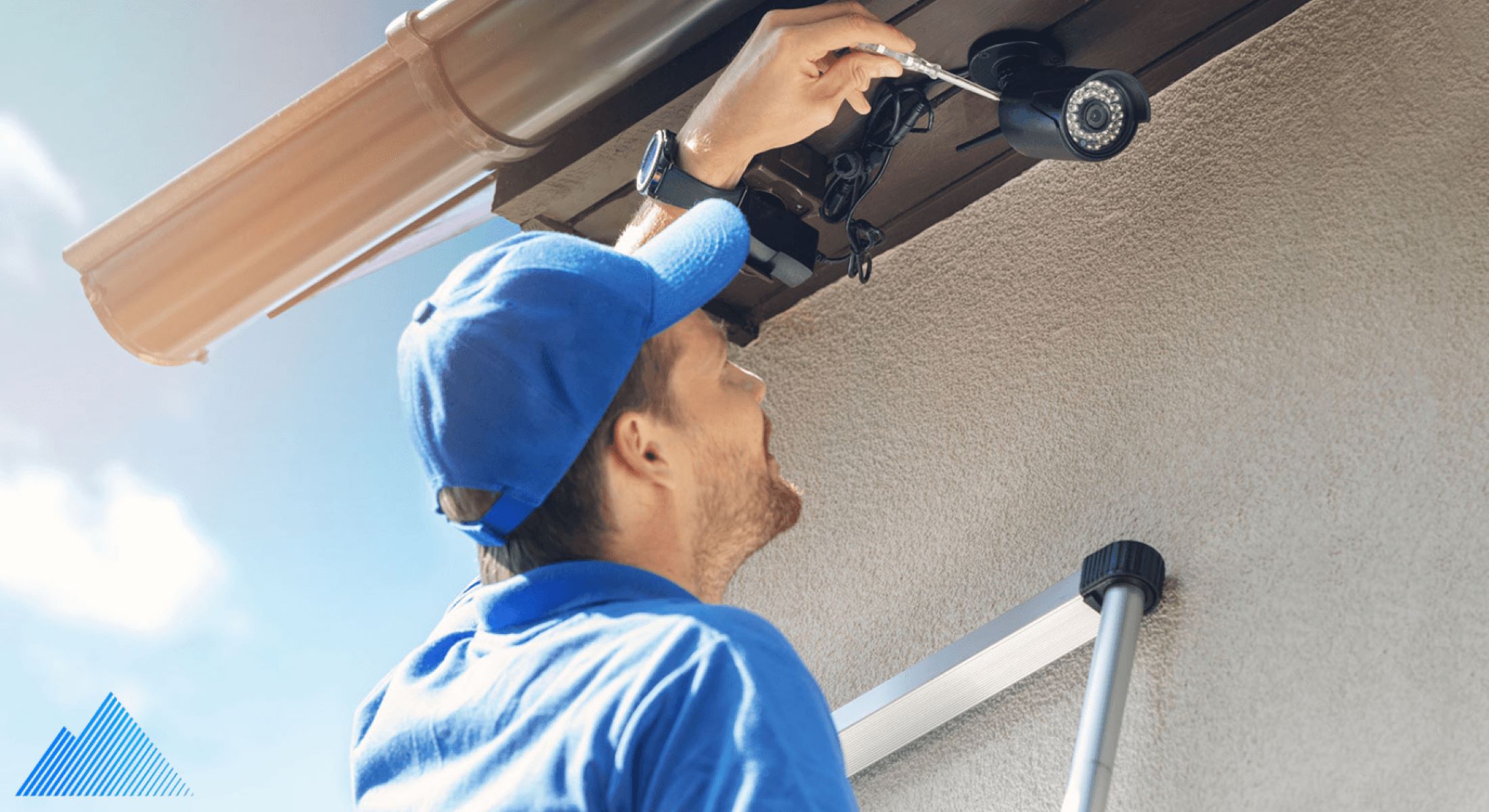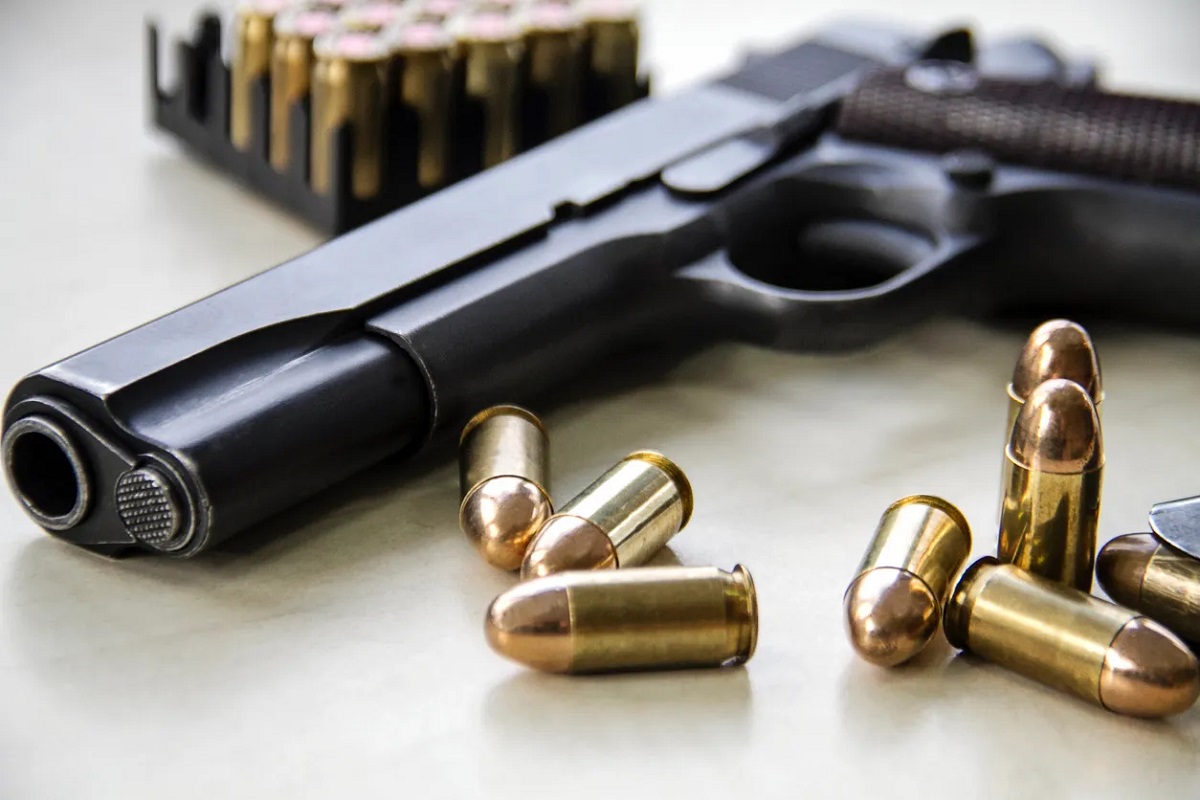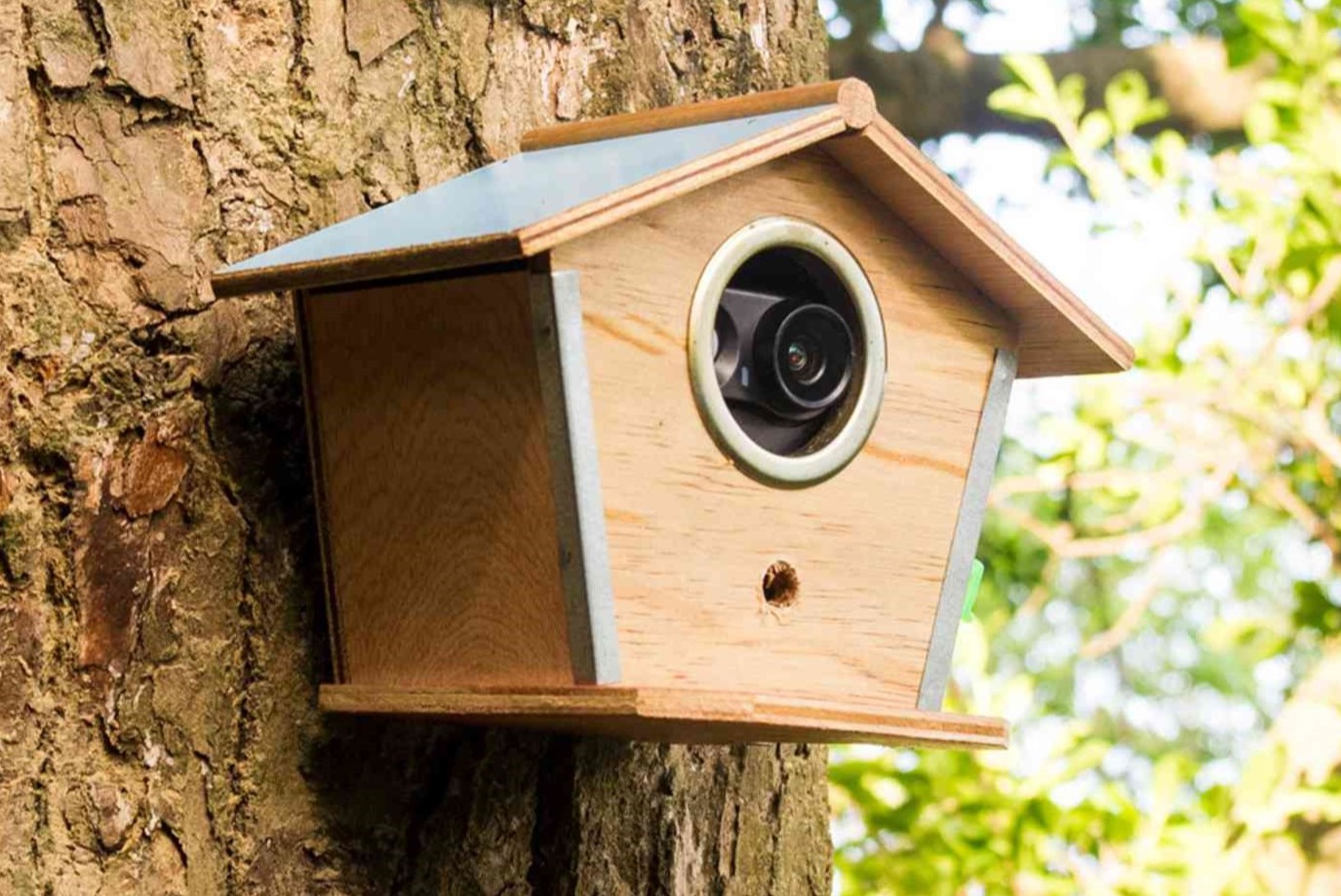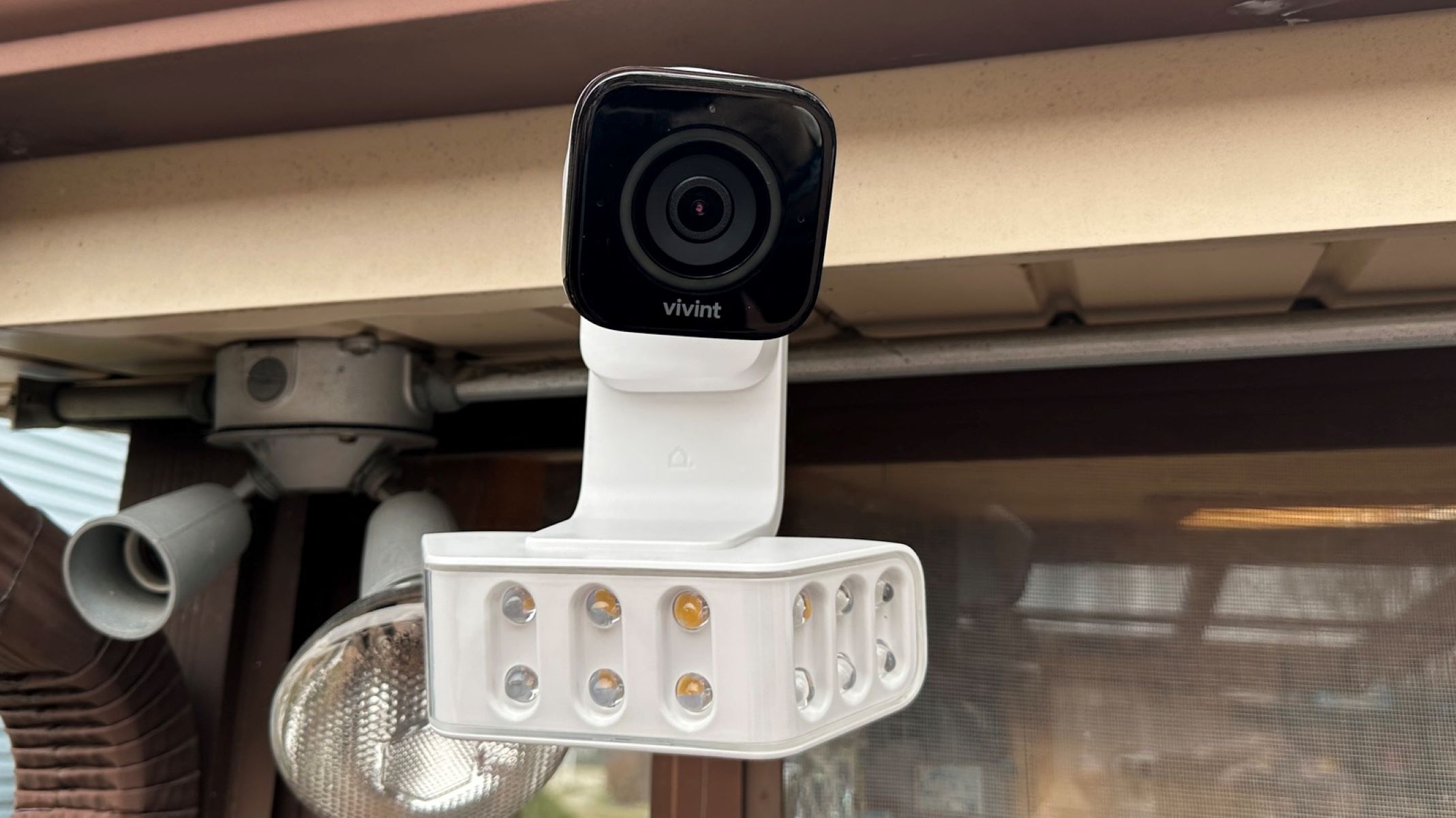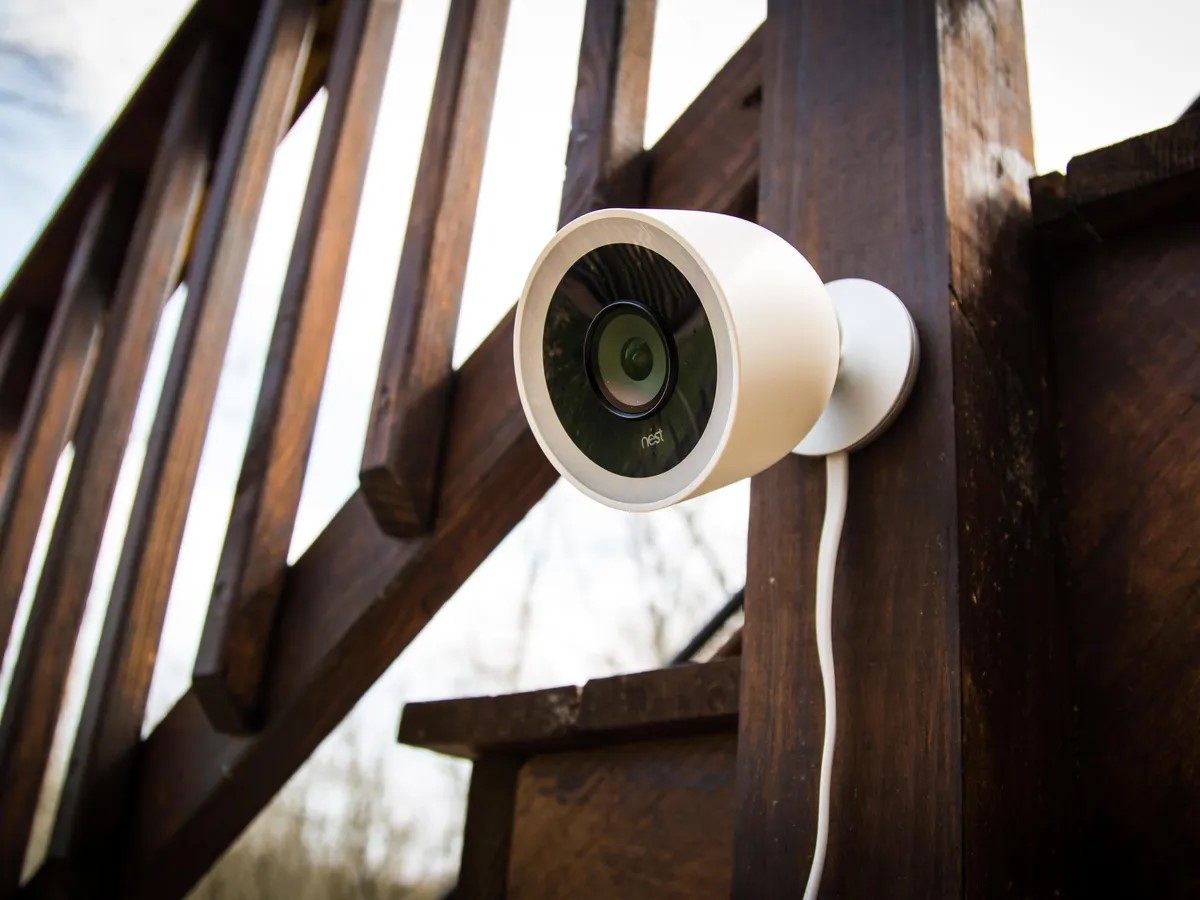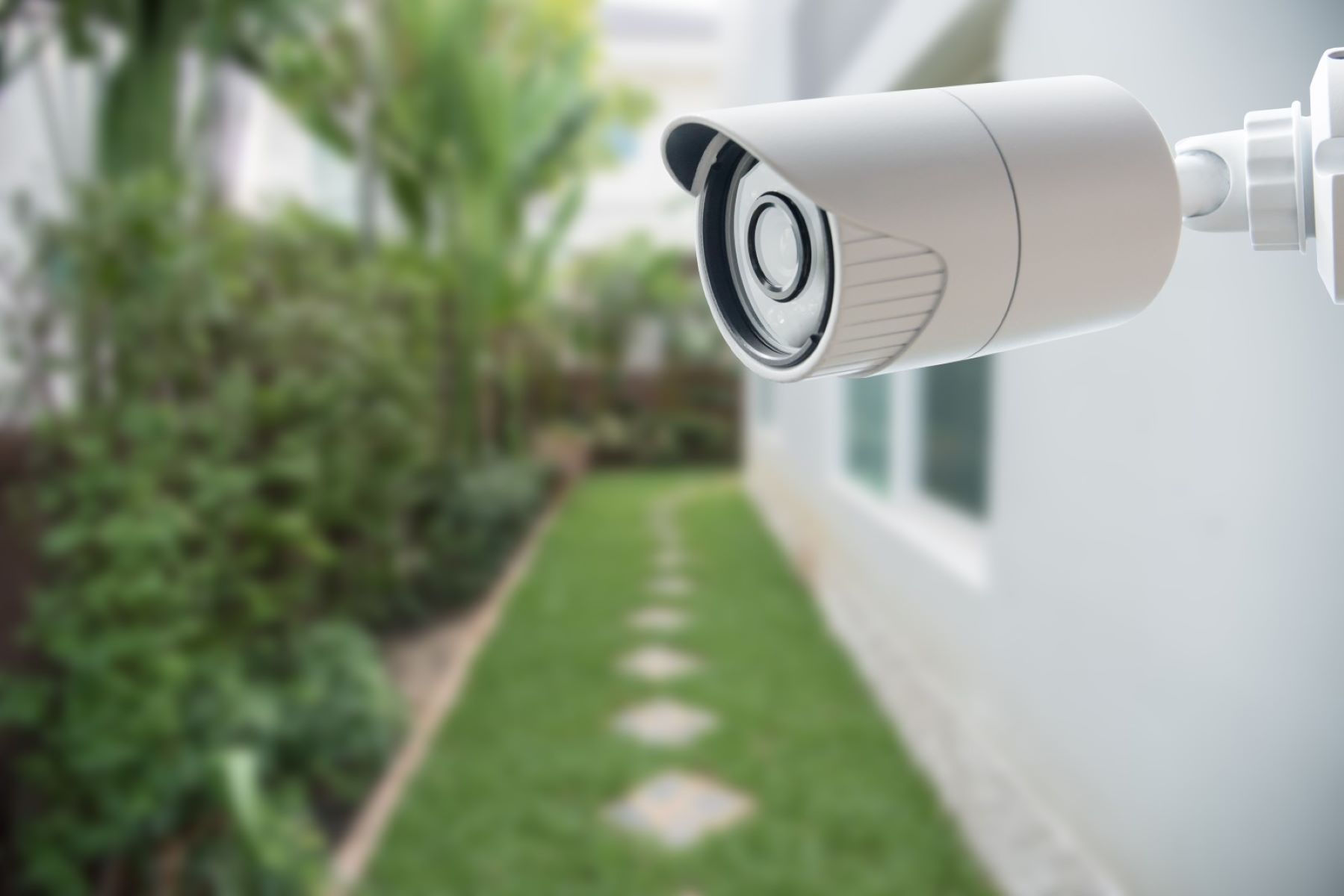Home>Home Security and Surveillance>How Many Outdoor Cameras Are Necessary
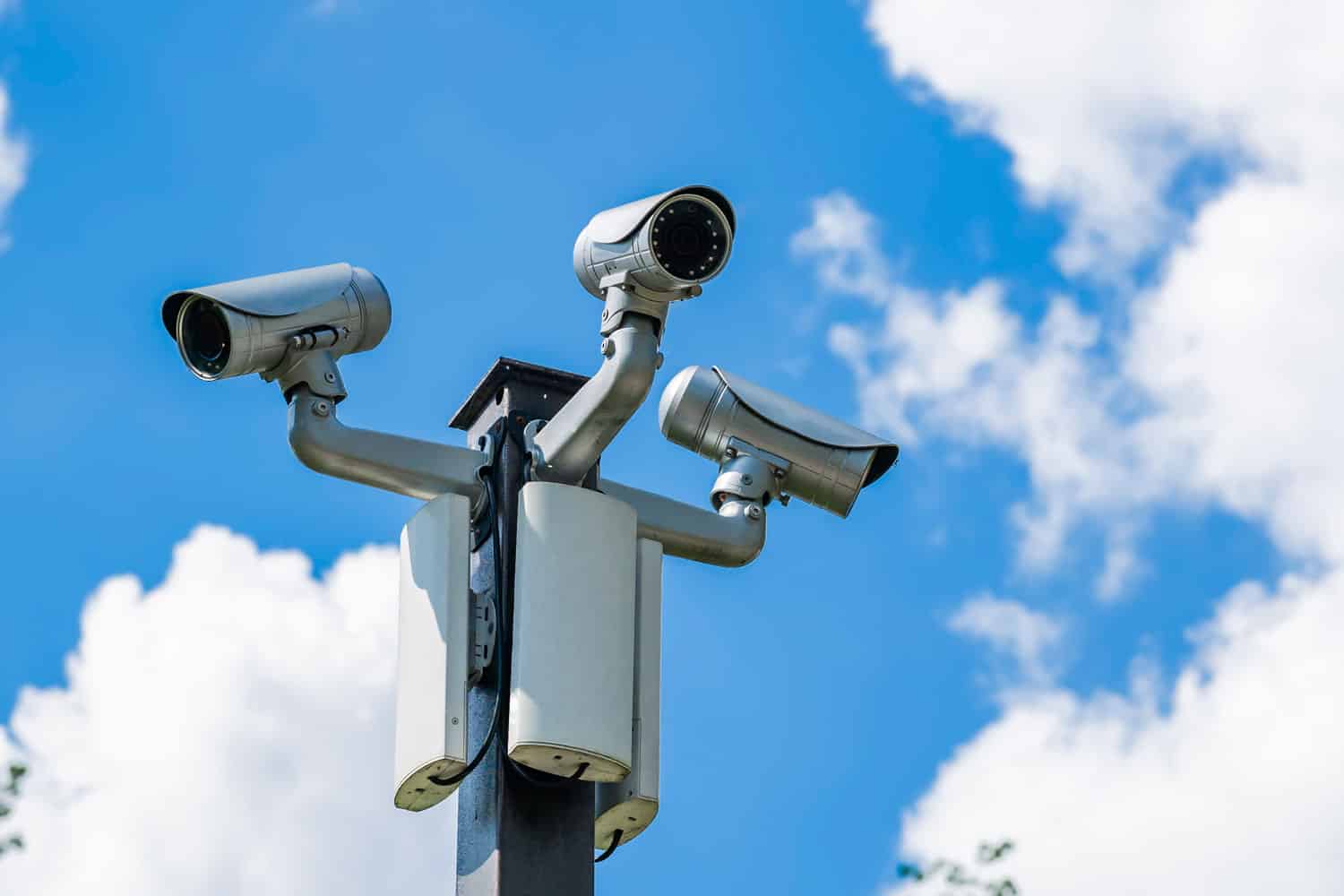

Home Security and Surveillance
How Many Outdoor Cameras Are Necessary
Modified: March 6, 2024
Ensure the utmost home security and surveillance with outdoor cameras. Find out how many are necessary for optimal protection and peace of mind.
(Many of the links in this article redirect to a specific reviewed product. Your purchase of these products through affiliate links helps to generate commission for Storables.com, at no extra cost. Learn more)
Introduction
Welcome to the world of home security and surveillance, where peace of mind is just a camera away! With the increasing concern for safety, more and more homeowners are turning to outdoor cameras as a way to protect their property and loved ones. But with so many options available in the market, it can be overwhelming to determine how many outdoor cameras are necessary.
In this article, we will explore the factors you need to consider when determining the number of outdoor cameras required for your home. By understanding these factors and making an informed decision, you can create a comprehensive security system that meets your specific needs.
So let’s dive in and discover how to determine the optimal number of outdoor cameras for your home security!
Key Takeaways:
- Strategically placing outdoor cameras at main entry points and vulnerable areas can enhance security and act as a deterrent against potential intruders. Regularly reassessing security needs and performing maintenance are essential for ongoing protection.
- Balancing budget and security needs is crucial when determining the number of outdoor cameras. Start with a setup that meets immediate security needs and gradually expand the system as the budget allows.
Read more: How Many Nest Outdoor Cameras Can I Have
Factors to Consider
When deciding how many outdoor cameras are necessary, it’s crucial to take various factors into account. Understanding these factors will help you make a well-informed decision and ensure that your home is adequately protected. Here are the key factors to consider:
- Area Coverage: The size of your property and the areas you want to cover play a significant role in determining the number of outdoor cameras needed. A larger property with multiple entry points, such as doors, windows, and gates, may require more cameras to ensure comprehensive coverage.
- Vulnerability: Assess the vulnerability of your property to determine the areas that need extra surveillance. For instance, if you live in a high-crime neighborhood or have valuable assets on your property, you may need more cameras to monitor those specific locations.
- Budget: Your budget will play a crucial role in determining the number of outdoor cameras you can afford. It’s important to strike a balance between the number of cameras required for adequate coverage and your budget limitations.
Understanding these factors will help you make a well-informed decision and ensure that your home is adequately protected. Now, let’s explore the different types of outdoor cameras available.
Area Coverage
When it comes to determining the number of outdoor cameras necessary for your home security, you need to consider the area coverage. This refers to the size of your property and the specific areas you want to monitor.
If you have a small property, such as an apartment or a townhouse, a single outdoor camera may be sufficient to cover the main entry points, such as the front door or balcony. However, if you have a larger property with multiple access points, such as doors, windows, and gates, you will likely need more cameras to ensure comprehensive coverage.
When assessing the area coverage, consider the layout of your property. Are there any blind spots or areas with limited visibility? These areas may require additional cameras to eliminate any potential security vulnerabilities.
Furthermore, take into account any specific areas of concern, such as a backyard where children play, a garage where valuable items are stored, or a pool that requires constant monitoring for safety. These high-priority areas may require dedicated cameras to ensure enhanced security.
By understanding the area coverage, you can determine the number of outdoor cameras needed to effectively monitor your property.
Now that we have explored the concept of area coverage, let’s delve into the different types of outdoor cameras available for home security and surveillance.
Vulnerability
Assessing the vulnerability of your property is a crucial step in determining the number of outdoor cameras necessary for your home security system. Understanding the potential risks and areas of concern will help you identify the locations that require additional surveillance.
Consider the crime rate in your neighborhood. If you live in an area with a high incidence of break-ins or vandalism, it’s important to increase the number of outdoor cameras to deter potential intruders and capture evidence in case of any illegal activity.
Take a close look at your property and identify any vulnerable points. Are there hidden entryways or blind spots that could be exploited by intruders? These areas may require additional cameras to ensure comprehensive coverage and eliminate any potential security vulnerabilities.
Furthermore, consider the nature of your property and any valuable assets that need protection. If you have expensive vehicles, outdoor equipment, or other valuable items, it is essential to have cameras installed in strategic locations to deter theft and monitor these high-value assets.
Assessing the vulnerability of your property will help you determine the number of outdoor cameras needed to address specific security concerns and provide you with peace of mind.
Now that we understand the importance of vulnerability assessment, let’s discuss the budget and how it impacts the number of outdoor cameras required.
Budget
While ensuring the security of your home is paramount, it’s also important to consider your budget when determining the number of outdoor cameras necessary for your security system. While there are various options available at different price points, it’s essential to strike a balance between your security needs and financial constraints.
Start by setting a realistic budget for your home security system. Consider not only the cost of the cameras but also any additional equipment, such as a video recorder, cables, and installation fees. It’s important to have a comprehensive understanding of all the costs involved to make an informed decision.
Once you have established your budget, you can prioritize the areas that require surveillance the most. Assess the vulnerability of your property and identify the critical zones that need enhanced security coverage. This will help you determine how many cameras you can afford within your budget limitations.
Keep in mind that high-quality, feature-rich cameras may come at a higher price. However, investing in reliable and durable cameras can provide long-term value and better peace of mind. Consider the durability, resolution, night vision capabilities, and remote monitoring options when making your purchasing decisions.
If your budget is limited, consider starting with a basic setup and gradually adding more cameras as your finances allow. This can help you have a scalable security system that can be expanded over time.
Remember, the goal is to strike a balance between your security needs and your budget limitations. By understanding your budgetary constraints, you can make an informed decision about the number of outdoor cameras that best fit your needs.
Now that we’ve considered the budget aspect, let’s explore the different types of outdoor cameras available for home security.
Types of Outdoor Cameras
When it comes to choosing outdoor cameras for your home security system, there are several types available to suit different needs and preferences. Understanding the various options will help you make an informed decision about the type of cameras that will best meet your security requirements. Here are the most common types of outdoor cameras:
- Fixed Cameras: Fixed cameras are stationary and offer a fixed field of view. They are ideal for monitoring specific areas, such as entry points or high traffic areas. While they do not offer the ability to pan, tilt, or zoom, they are reliable and easy to install. Fixed cameras are available in various form factors, including bullet cameras and dome cameras.
- Pan-Tilt-Zoom (PTZ) Cameras: PTZ cameras offer the ability to pan, tilt, and zoom, providing a wide coverage area. They can be controlled remotely, allowing you to change the direction of the camera or zoom in on specific areas of interest. PTZ cameras are particularly useful for large properties that require dynamic monitoring capabilities.
- Wireless Cameras: Wireless cameras are convenient and easy to install as they do not require extensive wiring. They use Wi-Fi or other wireless technologies to transmit video feed, making them flexible in terms of camera placement. However, it’s important to ensure a reliable and secure Wi-Fi network for uninterrupted video streaming.
Each type of outdoor camera has its own advantages and limitations. Consider factors such as the area you need to cover, the level of control you desire, and the ease of installation when choosing the type of cameras for your home security system. Now that we have explored the different types of outdoor cameras, let’s move on to determining the number of cameras required for your specific setup.
Fixed Cameras
Fixed cameras are a popular choice for outdoor surveillance due to their simplicity, reliability, and ease of installation. These cameras offer a fixed field of view, meaning they do not have the ability to pan, tilt, or zoom. However, don’t let their stationary nature fool you – fixed cameras are highly effective in monitoring specific areas of interest.
One of the main advantages of fixed cameras is their versatility in form factor. They are available in various designs, including bullet cameras and dome cameras. Bullet cameras are long and cylindrical in shape, making them ideal for mounting on walls or ceilings. They offer a focused view and are commonly used for monitoring specific points of entry such as doors or gates. On the other hand, dome cameras are more discreet and blend well with the surrounding environment. They are often installed on ceilings and provide a wide-angle view, making them suitable for monitoring larger areas.
Fixed cameras are an excellent choice for monitoring high-traffic areas, such as driveways, front porches, or backyards. They provide a consistent view of a specific location, ensuring that any suspicious activity is captured within their field of view. These cameras are particularly useful for deterring potential intruders and providing valuable evidence in case of any security incidents.
When determining the number of fixed cameras required for your property, consider the areas that need constant monitoring. Assess the vulnerability of your property and identify the critical points of entry or areas at risk. Install fixed cameras strategically to cover these high-priority locations. It’s important to ensure that there are no blind spots in your camera coverage and that all significant areas are adequately monitored.
Remember, the effectiveness of fixed cameras relies on their proper placement. Position them at eye-level for optimal identification and ensure they have a clear line of sight. Regular maintenance, including clearing any obstructions or adjusting the camera angles, is also crucial to maintain their efficiency.
Overall, fixed cameras are a reliable and cost-effective solution for outdoor surveillance. They allow you to monitor specific areas of interest and provide a visible deterrent for potential intruders. By strategically placing fixed cameras, you can enhance the security of your property and gain peace of mind.
Now that we have explored fixed cameras, let’s move on to another type of outdoor camera – Pan-Tilt-Zoom (PTZ) cameras.
Pan-Tilt-Zoom (PTZ) Cameras
When it comes to flexibility and versatility in outdoor surveillance, Pan-Tilt-Zoom (PTZ) cameras take the spotlight. These cameras offer the ability to pan, tilt, and zoom, providing a wide coverage area and dynamic monitoring capabilities.
The pan function allows the camera to move horizontally, covering a large area. This is especially useful for monitoring expansive properties or areas that require constant scanning, such as a parking lot or a perimeter fence. The tilt function enables the camera to move vertically, allowing you to adjust the angle and focus on specific points of interest. Lastly, the zoom function allows you to magnify objects, capturing fine details even from a distance.
PTZ cameras can be controlled remotely, either manually or automatically. Manual control gives you the flexibility to change the camera direction and zoom in on specific areas of interest in real-time. Automatic control, on the other hand, utilizes preset patterns or motion tracking to monitor specific areas or follow moving objects.
One of the key advantages of PTZ cameras is their ability to cover a large area with a single camera. This can significantly reduce the number of cameras needed in a surveillance setup, making them a cost-effective choice for properties with expansive outdoor spaces.
However, it’s important to note that PTZ cameras require careful planning and consideration for optimal effectiveness. The wide coverage area of a PTZ camera can sometimes result in a loss of detail compared to fixed cameras. Additionally, the movement of PTZ cameras may cause a temporary blind spot when they are repositioning. Therefore, it’s important to strategically position PTZ cameras to minimize any potential blind spots and ensure seamless coverage.
When deciding on the number of PTZ cameras required for your property, consider the size of the area you need to monitor and the level of control you desire. Assess the critical points that require dynamic surveillance and position PTZ cameras accordingly. It’s also important to consider factors such as camera resolution, zoom capabilities, and remote monitoring options when choosing PTZ cameras.
PTZ cameras offer immense flexibility and enhanced monitoring capabilities, making them an excellent choice for properties with large outdoor areas and a need for dynamic surveillance. By strategically placing PTZ cameras, you can achieve comprehensive coverage and have greater control over your outdoor security.
Now that we’ve explored PTZ cameras, let’s move on to another option – wireless cameras.
Consider the areas you want to monitor and the potential blind spots. Generally, it’s recommended to have at least one camera covering each entry point and enough to cover the entire perimeter of your property.
Wireless Cameras
Wireless cameras have become increasingly popular in the realm of outdoor surveillance due to their convenience, flexibility, and ease of installation. As the name suggests, these cameras use wireless technology, such as Wi-Fi, to transmit video feed, eliminating the need for extensive wiring.
One of the main advantages of wireless cameras is their flexibility in camera placement. With wireless connectivity, these cameras can be installed in various locations without the constraint of physical cables. This allows for greater versatility in positioning the cameras to achieve optimal coverage and angles.
Installation of wireless cameras is typically hassle-free, making them an ideal choice for properties where running cables may be challenging or inconvenient. Simply mount the cameras in the desired locations, connect them to your Wi-Fi network, and you’re ready to go. This quick and straightforward installation process makes wireless cameras a popular choice for both homeowners and renters.
Wireless cameras also offer remote access and monitoring capabilities. Through a mobile app or a web interface, you can view live video feeds, receive alerts, and even control the cameras remotely. This enables you to keep an eye on your property from anywhere, providing added convenience and peace of mind.
However, there are a few considerations when deciding to use wireless cameras. Firstly, a reliable and secure Wi-Fi network is crucial for uninterrupted video streaming. Make sure your Wi-Fi signal is strong and stable in the areas where you plan to install the cameras. Additionally, wireless cameras may require regular battery changes or charging, depending on their power source. Consider the maintenance requirements and factor in the additional cost and effort involved.
When determining the number of wireless cameras needed for your property, consider the areas that require surveillance and the Wi-Fi coverage in those locations. If certain sections of your property have weak or no Wi-Fi signal, you may need to install additional wireless access points or consider other camera options for those areas.
Wireless cameras offer convenience, flexibility, and remote monitoring capabilities, making them an attractive choice for many homeowners. By strategically placing wireless cameras and ensuring a robust Wi-Fi network, you can achieve effective outdoor surveillance without the need for extensive wiring.
Now that we’ve explored wireless cameras, let’s move on to the important question – how many outdoor cameras are necessary for your home security system?
Read more: How To Hide An Outdoor Camera
Number of Cameras Required
Deciding on the number of outdoor cameras required for your home security system can be a challenging task. It’s essential to strike a balance between adequate coverage and practicality. Here are some factors to consider when determining the number of cameras:
Single Camera Setup: If you have a small property or a limited budget, a single outdoor camera can still provide a level of security. Opt for a fixed camera strategically placed to cover the main entry points, such as the front door or backyard. This single camera can act as a visible deterrent and capture any suspicious activity within its view.
Multiple Camera Setup: For larger properties or properties with multiple access points, a multiple camera setup may be necessary to ensure comprehensive coverage. Start by identifying the high-priority areas that need constant monitoring, such as main entryways, parking areas, or backyards. Install fixed or PTZ cameras strategically to cover these critical points and eliminate any blind spots.
Consider the layout of your property and any vulnerable areas that require special attention. Evaluate the risk factors, such as crime rate or valuable assets, to determine the need for additional cameras in those areas. It’s important to ensure that all significant areas are adequately monitored to enhance the overall security of your property.
Keep in mind your budget when deciding on the number of cameras. If your budget is limited, prioritize the areas that need surveillance the most and gradually expand your security system over time.
Additionally, consider the integration of your outdoor cameras with other security measures, such as alarm systems or smart home technology. This cohesive approach can provide enhanced security coverage and a more comprehensive monitoring system.
Ultimately, the number of outdoor cameras required depends on the size of your property, the specific areas you want to monitor, the level of vulnerability, and your budget. Finding the right balance ensures that you have adequate coverage and peace of mind.
Now that we’ve discussed the number of cameras required, let’s move on to the placement considerations for maximizing the effectiveness of your outdoor surveillance system.
Single Camera Setup
A single camera setup can provide a basic level of security for smaller properties or those with budget limitations. While it may not offer comprehensive coverage, it can still serve as a valuable deterrent and capture any suspicious activity that occurs within its view.
When setting up a single outdoor camera, it’s important to strategically choose its placement. Identify the main entry points to your property, such as the front door, back door, or patio, and position the camera to cover one or more of these areas. This allows you to monitor the most critical points of access, where potential intruders are likely to enter.
Consider placing the camera at a height that provides a clear line of sight while also making it less accessible to tampering or vandalism. Mount it on a wall or under the eaves, ensuring that it is well-protected from the elements and any potential damage.
In a single camera setup, it’s important to take advantage of the camera’s features for optimal coverage. Look for a camera with a wide field of view and high-resolution capabilities. This will enable the camera to capture a larger area and provide clear and detailed footage, even from a distance.
Consider the camera’s night vision capabilities as well, especially if monitoring areas that may be dimly lit or have low visibility during nighttime. Investing in a camera with infrared or low-light capabilities can ensure that it captures clear footage even in challenging lighting conditions.
Keep in mind that with a single camera setup, there may be limitations in terms of coverage. It’s important to assess your property and identify any blind spots or areas that may not be adequately monitored by a single camera. Consider using additional security measures, such as motion sensor lights or visible signage, to complement the camera’s effectiveness and further deter potential intruders.
While a single camera setup may not offer comprehensive coverage, it can still provide valuable surveillance and serve as a deterrent for potential threats. Evaluate your property’s vulnerabilities, prioritize the areas that require monitoring the most, and strategically place your single camera to enhance your overall security.
Now that we’ve discussed the single camera setup, let’s explore the considerations for a multiple camera setup to ensure comprehensive coverage.
Multiple Camera Setup
A multiple camera setup is ideal for larger properties or those with multiple access points that require comprehensive coverage. By strategically placing multiple outdoor cameras, you can effectively monitor various areas of your property and eliminate blind spots.
When setting up multiple outdoor cameras, start by identifying the high-priority areas that require constant monitoring. These may include main entry points, such as front and back doors, windows, gates, or areas with valuable assets. Place a camera in each of these critical areas to ensure that any suspicious activity is captured within their field of view.
Consider the layout of your property and any vulnerable areas that may require additional surveillance. This could include side entrances, driveways, backyards, or any secluded areas that could be potential hiding spots for intruders. Position cameras accordingly to cover these specific locations and eliminate any potential blind spots that could compromise the security of your property.
When strategically placing multiple cameras, it’s important to ensure overlapping coverage between them. This redundancy provides backup and ensures that even if one camera fails or is tampered with, there are still others covering the same area. By doing so, you can enhance the effectiveness of your surveillance system and have peace of mind knowing that critical areas are always monitored.
Consider the type of cameras you choose for your multiple camera setup. Fixed cameras are suitable for monitoring specific areas, while PTZ cameras offer the flexibility of adjusting the camera direction and zooming in on areas of interest. You can use a combination of both types to achieve comprehensive coverage while having control and flexibility in monitoring specific points or areas.
Take advantage of the latest technology and features available in outdoor cameras. Look for cameras with high-resolution capabilities, wide-angle views, and night vision functionality to ensure clear and detailed footage in various lighting conditions. Additionally, consider cameras with motion detection or smart detection features that can send alerts or trigger recordings when unusual activity is detected.
A well-planned multiple camera setup can provide you with enhanced security and peace of mind. Regularly assess the effectiveness of your camera placement and make adjustments if necessary to adapt to any changes in your property or security requirements.
Now that we’ve explored the considerations for a multiple camera setup, let’s move on to discussing the placement considerations for optimizing your outdoor surveillance system.
Placement Considerations
Strategic placement of outdoor cameras is crucial to maximize the effectiveness of your surveillance system. By considering the following placement considerations, you can ensure comprehensive coverage and minimize any potential blind spots:
High Priority Areas: Identify the high-priority areas that require constant monitoring, such as main entry points, garages, or backyard access points. These areas are typically the most vulnerable and require special attention. Install cameras in these locations to capture any suspicious activity and provide a visible deterrent.
Blind Spots: Conduct a thorough assessment of your property to identify any blind spots where potential intruders could go undetected. These may include corners, alleys, or areas with obstructed views. Place cameras strategically to eliminate these blind spots and ensure seamless coverage of your property.
Height and Angle: Position your outdoor cameras at an optimal height and angle to achieve the best view of the areas you want to monitor. Mount them at a height that provides a clear line of sight while also keeping them out of reach from tampering or vandalism. Adjust the camera angles to capture the desired field of view and minimize any potential visual obstructions.
Weatherproofing: Ensure that your outdoor cameras are designed to withstand the elements. Look for cameras with weatherproof and vandal-resistant features that can withstand rain, snow, heat, and extreme temperatures. Properly mount the cameras to protect them from direct exposure to harsh weather conditions.
Lighting: Consider the lighting conditions in the areas you want to monitor. Install cameras in well-lit areas to ensure clear footage, especially during nighttime. If certain areas have low visibility, consider using additional lighting, such as motion sensor lights or infrared illuminators, to enhance visibility and improve camera performance.
Wireless Connectivity: If you’re using wireless cameras, ensure that they are within the range of a strong and stable Wi-Fi signal. Consider placing wireless access points strategically to extend the coverage area and eliminate any connectivity issues. Test the camera’s connection and video streaming quality in different places around your property before finalizing their placements.
Regular Maintenance: Regularly inspect and maintain your outdoor cameras to ensure their optimal performance. Clean the lenses from dust or debris, check the camera alignment, and ensure that all cables and connections are secure. Regular maintenance will help preserve the effectiveness of your surveillance system and prolong the lifespan of your cameras.
By taking these placement considerations into account, you can optimize the coverage and effectiveness of your outdoor surveillance system. Regularly assess the placement of cameras based on any changes to your property or security needs to ensure ongoing protection.
Now that we’ve discussed placement considerations, let’s conclude our article with final thoughts on determining the number of outdoor cameras necessary for your home security.
Read more: How Many Types Of Security Cameras Are There
High Priority Areas
Identifying the high priority areas in your property is essential for effective outdoor surveillance. These areas require constant monitoring as they are typically the most vulnerable and commonly targeted by potential intruders. By strategically placing cameras in these high priority areas, you can enhance the security of your property. Here are some key high priority areas to consider:
Main Entry Points: The main entry points of your property, such as the front door, back door, and side entrances, should be top priorities for surveillance. Install cameras to capture any suspicious activity or unauthorized entry attempts, aiming to deter potential intruders and gather evidence in case of a security breach.
Garage: If you have a garage, it’s important to include it as a high priority area. Many homeowners store valuable items in their garages, such as vehicles, tools, or equipment. Install cameras to monitor not only the garage doors but also the surrounding areas to prevent theft or vandalism.
Backyard Access Points: Backyards often have multiple access points, such as gates or fences, which can be potential entry points for intruders. Placing cameras to monitor these access points can help you detect any unauthorized entry and ensure the security of your property.
Windows and Sliding Doors: Windows and sliding doors are common points of vulnerabilities in homes. Ensure that cameras are positioned to cover these areas, providing an extra layer of security against potential break-ins or forced entry attempts.
Pool or Play Areas: If you have a swimming pool or outdoor play area for children, these locations should also be considered high priority areas. Install cameras to monitor these areas and ensure the safety of your loved ones. This can also help you keep an eye on any possible accidents or unauthorized access to restricted areas.
Outdoor Valuables: If you have any valuable items outdoors, such as expensive landscaping equipment or outdoor furniture, consider placing cameras to monitor these areas. The presence of cameras can deter potential thieves and prevent costly losses.
By identifying and prioritizing these high priority areas, you can strategically determine the placement of outdoor cameras to ensure comprehensive surveillance coverage. Regularly reassess the security needs of your property and adjust camera placement accordingly to maintain an effective outdoor surveillance system.
Now that we’ve discussed the importance of high priority areas, let’s conclude our article with some final thoughts on determining the number of outdoor cameras necessary for your home security.
Blind Spots
Eliminating blind spots in your outdoor surveillance system is crucial to ensure comprehensive coverage and enhance the overall effectiveness of your security measures. Blind spots are areas that are not adequately covered by your cameras, which can leave vulnerabilities in your property’s security. By identifying and addressing these blind spots, you can increase the level of protection for your home. Here are some key considerations to eliminate blind spots:
Critical Assessment: Conduct a thorough assessment of your property to identify any areas that may not be adequately monitored by your existing camera placement. Look for corners, alleys, or areas with obstructed views where potential intruders could go undetected.
Overlapping Coverage: Ensure that your cameras have overlapping coverage to minimize blind spots. By having multiple cameras capturing the same area from different angles or perspectives, you can eliminate any gaps in surveillance and ensure that any activity in that location is captured from at least one camera.
Strategic Placement: Adjust the placement of your cameras to cover blind spots. Consider installing additional cameras or repositioning existing ones to fill in the gaps in coverage. Aim to provide overlapping views and ensure that all critical areas are well-monitored.
Alternative Viewing Angles: If achieving complete coverage with your existing cameras is challenging, consider alternative options such as installing additional cameras with different viewing angles or utilizing panoramic cameras that can provide a wide field of view.
Obstruction Removal: Identify any potential obstacles that may obstruct the view of your cameras, such as dense foliage, trees, or structures. Trim overgrown vegetation and adjust camera angles to ensure clear visibility of the monitored areas.
Testing and Regular Maintenance: Regularly test your camera feeds to identify any blind spots through the live video stream. This will help you identify areas that may need repositioning or additional cameras. Additionally, perform regular maintenance on your cameras to ensure they are clean, in proper working order, and continue to provide maximum coverage.
Eliminating blind spots in your outdoor surveillance system requires a combination of careful assessment, strategic placement, and ongoing maintenance. By addressing these blind spots, you can strengthen the security of your property and have greater peace of mind knowing that potential vulnerabilities are minimized.
Now that we’ve discussed the importance of addressing blind spots, let’s conclude our article with some final thoughts on determining the number of outdoor cameras necessary for your home security.
Final Thoughts
Determining the number of outdoor cameras necessary for your home security requires careful consideration of various factors. By taking into account the size of your property, the areas you want to monitor, the level of vulnerability, and your budget, you can make an informed decision on the right number of cameras.
Whether you opt for a single camera setup or a multiple camera setup, it’s important to focus on high priority areas and eliminate blind spots. Strategically placing cameras at main entry points, vulnerable areas, and high-value assets can enhance security and act as a deterrent against potential intruders.
Consider the different types of outdoor cameras available, such as fixed cameras, PTZ cameras, and wireless cameras. Each type has its own advantages and limitations, and choosing the right type depends on your specific needs and preferences.
Placement considerations, such as height and angle, weatherproofing, lighting, and wireless connectivity, are crucial for optimizing the coverage and effectiveness of your outdoor surveillance system.
Regularly reassessing your security needs, adjusting camera placements, and performing maintenance on your cameras are essential to ensure ongoing protection.
Remember, while having a comprehensive security system is important, it’s equally vital to strike a balance with your budget. Start with a setup that meets your immediate security needs and gradually expand the system as your budget allows.
Ultimately, the goal is to create a robust outdoor surveillance system that provides peace of mind and deters potential threats. By considering the factors discussed in this article, you can determine the optimal number of outdoor cameras necessary for your home security and create a safe and secure environment for you and your loved ones.
Now, armed with knowledge and understanding, it’s time to take action and invest in the right outdoor cameras to enhance the security and protection of your home.
Frequently Asked Questions about How Many Outdoor Cameras Are Necessary
Was this page helpful?
At Storables.com, we guarantee accurate and reliable information. Our content, validated by Expert Board Contributors, is crafted following stringent Editorial Policies. We're committed to providing you with well-researched, expert-backed insights for all your informational needs.
